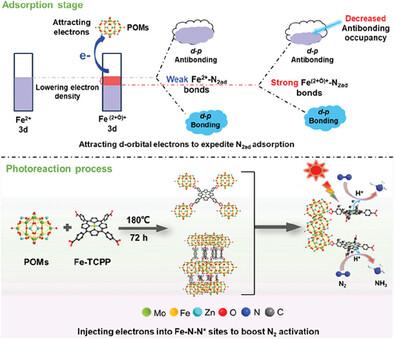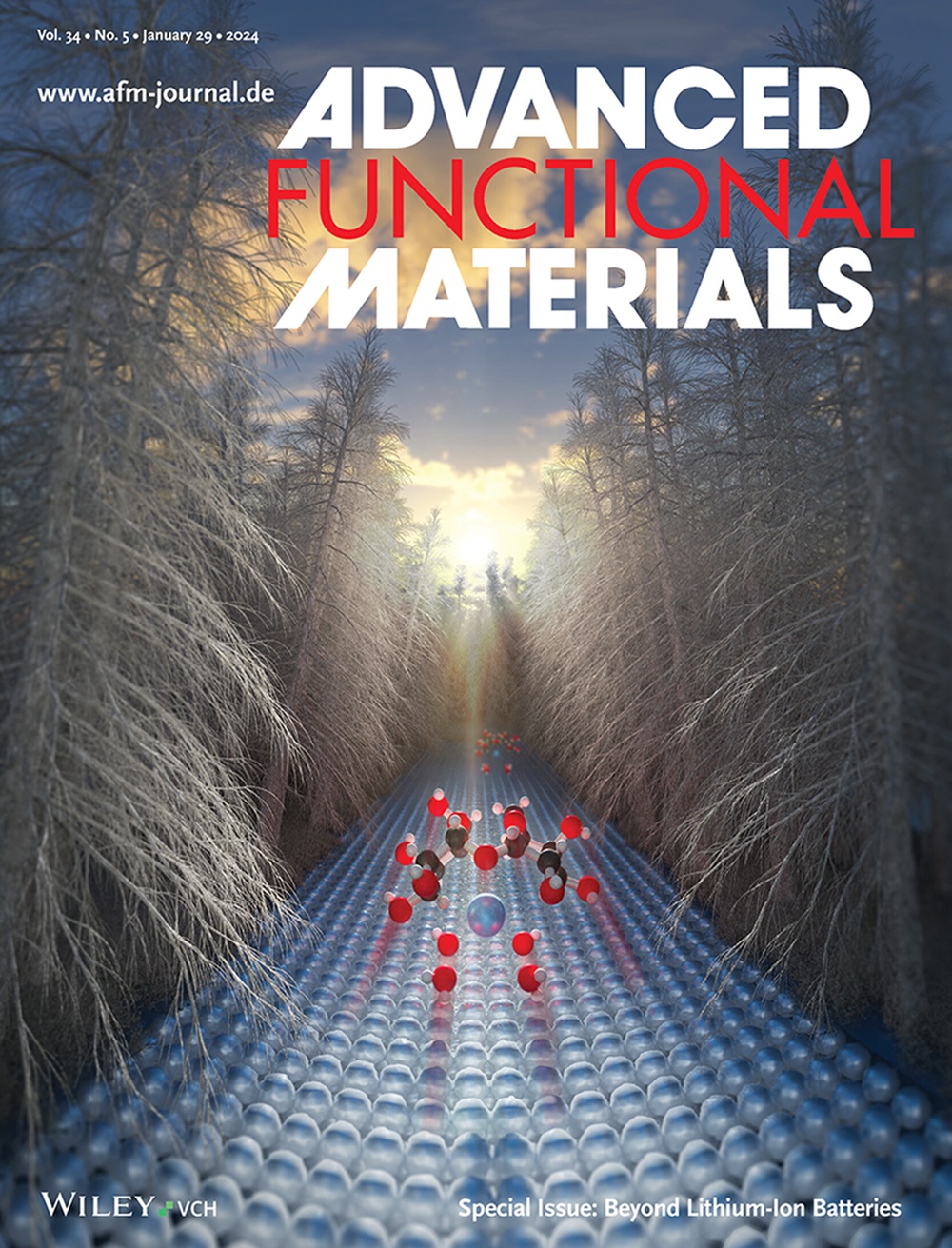Molecular Engineering of Active Fe Center in Metalloporphyrin Coupled with Polyoxometalates for Efficient Photochemical Nitrogen Fixation: Synergistic Effect of Multiactive Sites Strengthening Metal-N-N* Interactions
IF 18.5
1区 材料科学
Q1 CHEMISTRY, MULTIDISCIPLINARY
引用次数: 0
Abstract
Precisely modulating the chemical microenvironment of catalytic centers at the molecular level to achieve efficient photocatalytic nitrogen fixation remains a grand challenge. Herein, a polyoxometalates (POMs) metalloporphyrin organic framework Fe-PMOF {POM-TCPP(Fe)} is constructed by integrating the oxygen-rich unit POMs {ε-PMo8VMo4VIO40Zn4} and the photosensitive metalloporphyrin (Fe-TCPP) as a model to precisely regulate intermolecular electron transfer. Benefiting from electronic interactions, the optimized POM-TCPP(Fe) exhibits a favorable activity toward NH3 production with a rate of 110.06 µmol g−1 h−1. The improved performance can be attributed to the effective regulation of the chemical microenvironment surrounding the active centers, enabling the synergistic interaction of multiple active sites (Fe and Mo) to facilitate the adsorption and activation of nitrogen. More specifically, oxygen-rich unit POMs exhibit strong electronegativity, which can attract electrons from Fe atoms, thereby decreasing the 3d orbitals’ electron density of Fe sites and elevating its unoccupied d-orbitals to facilitate N2 adsorption. Moreover, the porphyrin units with high photosensitivity efficiently generate electrons under photoexcitation, which can rapidly migrate and inject them to the active Fe-N-N* sites to facilitate N2 activation. Ultimately, the mimic nitrogenase active site intelligently integrates multiple active sites of transition metals Fe and Mo, thus improving the nitrogen fixation efficiency.

求助全文
约1分钟内获得全文
求助全文
来源期刊

Advanced Functional Materials
工程技术-材料科学:综合
CiteScore
29.50
自引率
4.20%
发文量
2086
审稿时长
2.1 months
期刊介绍:
Firmly established as a top-tier materials science journal, Advanced Functional Materials reports breakthrough research in all aspects of materials science, including nanotechnology, chemistry, physics, and biology every week.
Advanced Functional Materials is known for its rapid and fair peer review, quality content, and high impact, making it the first choice of the international materials science community.
 求助内容:
求助内容: 应助结果提醒方式:
应助结果提醒方式:


